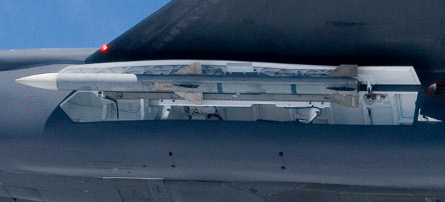Boeing on 8 July received a license to export the F-15 Silent Eagle to South Korea and tested in flight one of the key upgrades for the stealthy new design.
"It was a big week for the F-15," says Brad Jones, Boeing director for F-15 development programmes.
The US Department of State awarded the license after a two-month review based on an undisclosed export policy established in May, Jones says.
South Korea is expected to issue a request for proposals for the F-X3 contract in the first quarter of 2011, Jones says.
The F-15SE will compete with the Lockheed Martin F-35 and Eurofighter Typhoon for the contract.
 |
|---|
©Boeing |
Boeing is offering a range of upgrades to make the F-15 more survivable in aerial combat. The package includes techniques and treatments to reduce the frontal aspect radar cross section (RCS) in X-band.
Boeing's goal at programme launch in March 2009 was to reduce the RCS signature to a level equivalent with the frontal-aspect stealth of the "international release version" of the F-35.
However, Boeing was unable to confirm last month whether the export policy approved two months ago allows the F-15SE to achieve that standard.
Depending on the customer's desires, the F-15SE also may include other upgrades, including a panorama cockpit display, a BAE Systems digital electronic warfare system (DEWS) and tail fins canted outward by 15º.
Another key feature for reducing the F-15 RCS signature is the addition of a conformal weapons bay (CWB).
 |
|---|
©Boeing |
F-15E1, Boeing's demonstration aircraft, on 8 July flew the first of three flights to demonstrate the CWB, a conformal fuel tank modified to launch a missile or drop a munition
The initial flight gathered data needed to launch a missile for the first time next week at the Point Mugu test range in California, Jones says.
Boeing has scheduled two windows for the missile launch test on 14 July and 15 July, Jones says. The F-15E1 is intended to launch the missile at 15,000ft and 250kts.
For the purposes of the test, a special control panel is installed in the cockpit to allow the pilot to open the CWB doors, launch the missile and close the doors again.
Boeing has previously dropped weapons from inside internal weapons bays, but only on demonstration programmes, Jones says. If the next flight test proves the F-15 CWB concept can successfully launch a missile, the company's next challenge will be to learn how to "productionise" the system.
An unidentified foreign supplier has already been selected to produce the CWBs for the F-15SE.
Source: Flight International
















